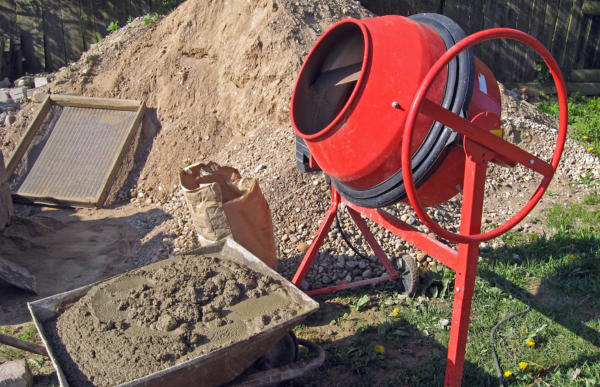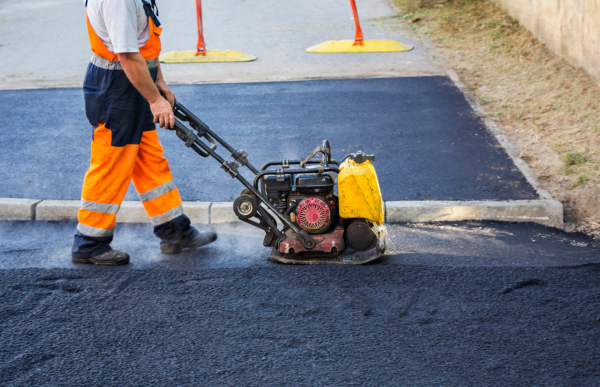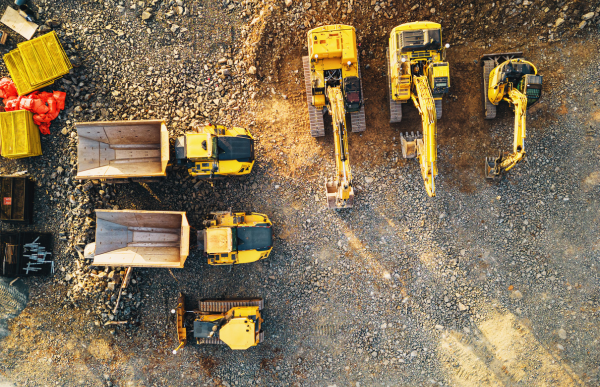The construction industry has long relied on heavy machinery to complete large-scale projects efficiently. However, as urban spaces become more constrained and projects demand more flexibility, portable and compact versions of traditional construction equipment have gained immense popularity. These modern machines offer similar power and efficiency while being more maneuverable, cost-effective, and environmentally friendly.
This blog explores some of the best compact and portable construction equipment available today, their advantages, and why they are essential for the future of construction.
1. The Rise of Compact Construction Equipment
Compact construction equipment is designed to perform the same tasks as their larger counterparts but in tighter spaces and with improved efficiency. These machines are becoming a preferred choice for contractors working in urban environments, residential areas, and remote locations.
Key Benefits of Portable Construction Equipment:
- Increased Accessibility: Ideal for confined spaces and urban settings.
- Fuel Efficiency: Smaller engines consume less fuel while maintaining productivity.
- Lower Maintenance Costs: Fewer complex components reduce maintenance expenses.
- Easier Transportability: Many compact models can be towed on trailers without requiring special permits.
- Versatility: Compatible with various attachments for different tasks.
2. Top Compact Construction Equipment You Should Know About

Let’s take a look at some of the most innovative and high-performance compact construction machines that are redefining efficiency in the industry.
a) Mini Excavators
Mini excavators provide precision digging, grading, and trenching capabilities while being compact enough to fit in tight job sites. The key differences between popular models lie in their size, digging depth, power, and control features.
| Model | Operating Weight | Digging Depth | Engine Power | Notable Features |
| Kubota U35-4 | 8,129 lbs (3,688 kg) | 10 ft 8 in (3.3 m) | 24.8 HP | Advanced hydraulic control, tight tail swing |
| Bobcat E35 | 7,699 lbs (3,493 kg) | 10 ft 1 in (3.07 m) | 24.8 HP | Zero tail swing, enhanced cab comfort |
| Caterpillar 305E2 | 11,443 lbs (5,192 kg) | 11 ft 3 in (3.43 m) | 40.2 HP | Higher digging force, stable performance |
Key Differences:
- Kubota U35-4 is best for maneuverability in tight spaces.
- Bobcat E35 offers zero tail swing, making it more stable when working next to obstacles.
- Caterpillar 305E2 is more powerful and suited for heavier excavation tasks.
b) Compact Skid Steer Loaders
Skid steer loaders are known for their versatility and ability to operate multiple attachments for digging, lifting, and material handling. The main differences between these models revolve around size, power, and lifting capacity.
| Model | Operating Weight | Horsepower | Rated Operating Capacity | Notable Features |
| Bobcat S70 | 2,892 lbs (1,312 kg) | 23.5 HP | 760 lbs (345 kg) | Ultra-compact, ideal for tight spaces |
| John Deere 316GR | 6,375 lbs (2,892 kg) | 65 HP | 1,750 lbs (794 kg) | Stronger lift capacity, radial lift |
| Caterpillar 226D3 | 5,705 lbs (2,588 kg) | 67.1 HP | 1,550 lbs (703 kg) | Advanced control system, hydraulic power |
Key Differences:
- Bobcat S70 is the smallest and lightest, perfect for small-scale jobs or indoor work.
- John Deere 316GR offers more lifting capacity and is suitable for mid-size projects.
- Caterpillar 226D3 features higher horsepower and advanced hydraulics for heavy-duty tasks.
c) Portable Concrete Mixer
Portable concrete mixers are crucial for on-site mixing, allowing for better control over consistency and reducing waste. The main differences among models involve capacity, power source, and mobility.
| Model | Drum Capacity | Motor Type | Mixing Speed | Notable Features |
| Multiquip MC64SH5 | 6 cu ft | Gasoline (Honda GX160) | High-speed | Heavy-duty steel drum, ideal for commercial use |
| Kushlan 350DD | 3.5 cu ft | Electric (120V) | Standard | Lightweight, ideal for DIY and small projects |
| Imer Minuteman II | 5 cu ft | Electric (120V) | Moderate | Portable and easy to transport |
Key Differences:
- Multiquip MC64SH5 is gas-powered, making it suitable for remote job sites with no electric access.
- Kushlan 350DD is smaller and lightweight, ideal for residential and DIY projects.
- Imer Minuteman II offers medium capacity and portability, making it a balance between small and large mixers.
d) Compact Telehandlers
Telehandlers are used for lifting and placing materials at heights while offering excellent reach. The main differences between models involve lifting capacity, reach, and maneuverability.
| Model | Lift Capacity | Max Lift Height | Horsepower | Notable Features |
| Genie GTH-5519 | 5,500 lbs (2,494 kg) | 19 ft (5.79 m) | 74 HP | Compact size, great for tight spaces |
| JCB 505-20TC | 5,500 lbs (2,494 kg) | 20 ft (6.1 m) | 74 HP | Stronger frame, enhanced visibility |
| Manitou MLT 625 | 5,500 lbs (2,494 kg) | 19 ft 8 in (6 m) | 75 HP | All-terrain capabilities |
Key Differences:
- Genie GTH-5519 is lightweight and compact, perfect for urban and warehouse applications.
- JCB 505-20TC has a stronger chassis, making it suitable for tougher job sites.
- Manitou MLT 625 is built for rough terrain, making it ideal for agriculture and uneven ground conditions.
e) Small Asphalt Pavers
Compact asphalt pavers are essential for small-scale paving jobs such as driveways and pathways. Their differences revolve around paving width, power, and compaction capabilities.
| Model | Paving Width | Engine Power | Hopper Capacity | Notable Features |
| Bomag BF 200 C-2 | 3.3-11.5 ft | 49 HP | 6.5 tons | Precise control system, compact size |
| Carlson CP75 II | 8-15 ft | 74 HP | 9 tons | Advanced screed technology, smooth finish |
| Caterpillar AP255E | 4.6-8.6 ft | 74 HP | 5.5 tons | Ideal for narrow roads and urban projects |
Key Differences:
- Bomag BF 200 C-2 is the most compact, great for sidewalks and tight spaces.
- Carlson CP75 II provides a wider paving range and is ideal for larger asphalt applications.
- Caterpillar AP255E is best for urban and residential paving, with excellent maneuverability.
3. How Compact Equipment is Changing the Construction Industry

The introduction of compact and portable construction equipment has revolutionized how projects are completed, making job sites more efficient, cost-effective, and environmentally friendly. Below, we dive deeper into how these smaller machines are transforming the construction industry.
Improved Job Site Productivity
One of the biggest advantages of compact construction equipment is its ability to boost productivity on job sites. These machines are designed to navigate tight spaces, small urban environments, and indoor construction zones where traditional heavy machinery would struggle.
✅ Easier Access to Confined Areas – Mini excavators, compact loaders, and skid steers can fit into narrow alleys, basements, and congested urban settings that full-size equipment cannot.
✅ Faster Task Completion – Smaller machines offer quick maneuverability and precision, reducing downtime caused by repositioning large equipment.
✅ Minimal Ground Disruption – Compact equipment is lighter, which prevents excessive soil disturbance, making them ideal for landscaping and delicate excavation projects.
✅ Multi-Purpose Functionality – Many compact machines can switch between multiple attachments, allowing for excavation, lifting, and grading without requiring separate equipment.
Example: A mini excavator can perform the same tasks as a full-sized excavator but can be transported with a small trailer, allowing for quicker mobilization between job sites.
Lower Carbon Footprint
Sustainability is a growing concern in the construction industry, and compact equipment helps reduce carbon emissions and fuel consumption. Manufacturers are developing hybrid and fully electric models to meet strict environmental regulations.
✅ Fuel Efficiency – Smaller diesel engines consume less fuel per hour, significantly lowering emissions compared to traditional equipment.
✅ Electric & Hybrid Models – Many compact machines now come in electric and hybrid versions, reducing noise pollution and eliminating fuel dependency.
✅ Reduced Idling & Smart Engine Technology – Advanced auto-idle and load-sensing hydraulics optimize fuel consumption by running the engine only when necessary.
✅ Less Site Impact – Compact machines use smaller tires and tracks, which reduce ground compaction and environmental damage.
Example: The Bobcat E10e, an electric mini excavator, provides zero emissions while being small enough to work indoors or in areas with strict noise and air quality restrictions.
Cost Savings for Contractors
Compact construction equipment allows contractors to cut costs without sacrificing performance, making them a great investment.
✅ Lower Initial Investment – Compact models cost significantly less than full-sized equipment, making them an affordable option for small and mid-sized businesses.
✅ Reduced Transportation Costs – Smaller machines can be towed with a standard truck and trailer, avoiding the high costs of permits and special transport requirements.
✅ Lower Fuel & Maintenance Expenses – These machines require less fuel and have simpler hydraulic systems, which leads to fewer breakdowns and reduced maintenance costs.
✅ Longer Lifespan with Proper Use – Because compact machines are used for smaller jobs, they experience less wear and tear, increasing their longevity.
Example: A compact skid steer loader costs 30-50% less than a full-size version while still performing 80-90% of the same functions.
Enhanced Operator Comfort
Compact construction equipment is designed with operator efficiency and comfort in mind, ensuring less fatigue and better control on job sites.
✅ Ergonomic Cab Design – Newer compact machines feature adjustable seats, climate control, and touchscreen controls for an improved working experience.
✅ Intuitive Controls & Automation – Many models come with joystick controls, digital displays, and semi-autonomous features to make operation easier, even for beginners.
✅ Reduced Noise & Vibration – Compact machines produce less noise and vibration, making them safer and more comfortable to operate over long shifts.
✅ Better Visibility – Since compact machines have a smaller frame, they offer enhanced 360-degree visibility, improving safety on-site.
Example: The Kubota U35-4 mini excavator features proportional hydraulic controls and a deluxe operator’s seat, reducing strain and fatigue during long hours of operation.
4. Future Trends in Compact Construction Equipment
As technology evolves, compact construction equipment will continue to improve with features such as:
✅ Autonomous Operation – AI-powered compact machines that can operate with minimal human intervention.
✅ Electric and Hybrid Options – More manufacturers are introducing zero-emission equipment.
✅ Smart Connectivity – IoT-enabled equipment with real-time diagnostics and remote operation capabilities.
5. Choosing the Right Compact Equipment for Your Needs

Before purchasing compact construction equipment, consider the following:
- Project Scope: Ensure the machine meets your project requirements.
- Attachment Compatibility: Check if it can accommodate multiple tools.
- Maneuverability: Opt for equipment that fits well in your workspace.
- Fuel Type: Choose between diesel, electric, or hybrid models.
- Manufacturer Support: Reliable after-sales service is crucial for long-term use.
Compact and portable construction equipment is revolutionizing the industry by providing contractors with powerful, efficient, and cost-effective solutions. Whether you’re working in a tight urban space, a remote area, or looking for eco-friendly alternatives, there is a compact machine that fits your needs.
Would you like to explore specific compact construction equipment models for your next project? Let us know in the comments below!

